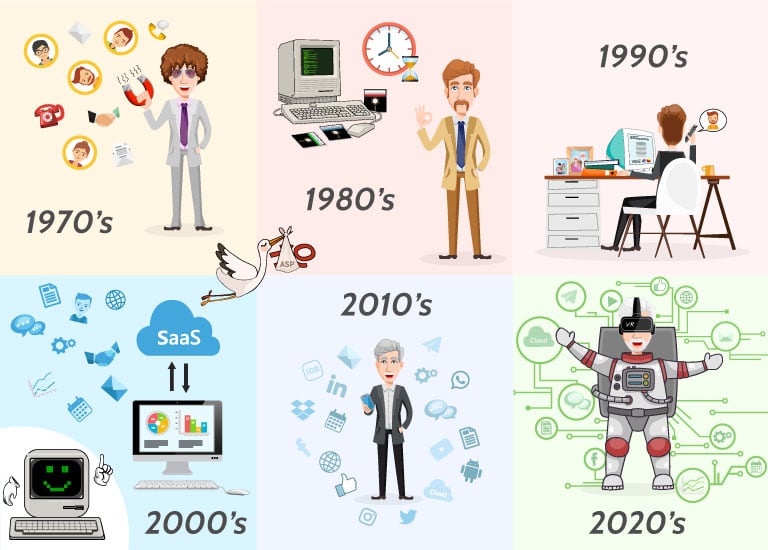Aaah, the good old days, when everyone had time to take the time… IT’S WRONG! The 70-hour weeks, no paid holidays … Was it really better before? The industrial revolution and, more recently, the IT revolution have changed everything for many trades, especially in terms of customer relations: social networks , CRM , etc. All these tools that allow you today to be reactive, proactive and anticipate the market. How did we develop with these tools? Here is the story of the progression through time of customer relationship management.
In the 1970s, relationship marketing – in contrast to transactional marketing – put the customer at the centre of its sales strategy . We then speak of the “Know, Like, Trust” principle, the principle of Customer Monitoring to achieve customer satisfaction and therefore loyalty.
The 80s are above all a look towards the future. While the future made spectators dream, the democratisation of IT allowed companies to try management software and the first databases were born. They saved time by making prospecting and sales easier for salespeople.
The 90s marked above all the desire to reach Nirvana with this new methodology which finally found its name: Customer Relationship Management (or CRM ). We are less disjointed, more orderly thanks to the data storage tools developed then, still far from being the ones we know today.
Everything accelerates with the new Millennium! Resolution: more performance thanks to the different analysis tools found in CRM software . The marketing tools also help engagement and promote collaborative work.
Still further, the advent of Smart Devices in the 2010s pushes publishers to rethink their software in terms of mobility. The CRM is now connected and social, mobile and application.
It remains to be seen what the next decade holds, surprises, we are sure.


